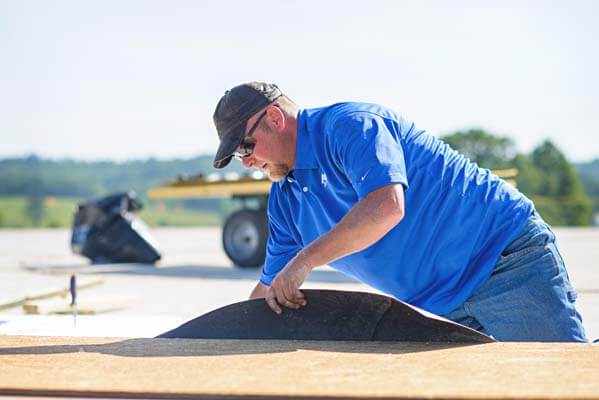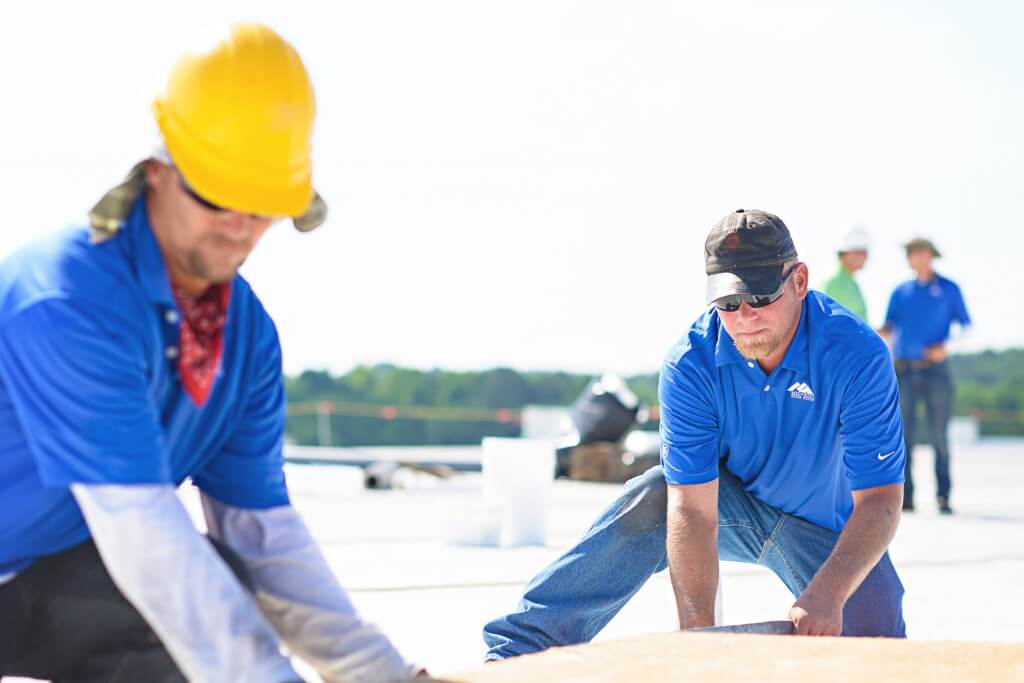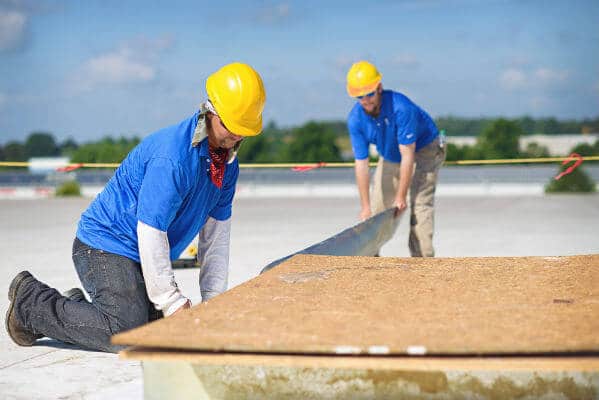Tear Off or Re-Roof? The Answer Depends on What Lies Beneath


When it’s time for a new roof, your options are to re-roof over the one you have or tear the old one off and start from scratch. Choosing the right strategy will save you money and make sure that the roof you get matches your buildings needs. If your roof already has two layers, you might be asking, “Why can’t I just tear off the top layer and build over the one left in place?” This situation almost never presents itself as a viable option. If the top roof needs to be replaced, the original roof underneath—which is much older—probably needs to be replaced, too.
Benefits of Installing on top of an Existing Roof
By laying down a new roof over the existing one you:
- Save money, especially when the old insulation can stay in place and be used again.
- Save time by skipping the step of having a team remove the old roof before building the new one.
- Contribute to a healthier environment—when you don’t tear off roof material, it doesn’t end up in a landfill.
Tearing Off the Old Roof
So if adding a new roof layer is cheaper and faster, why would anyone tear off the old roof in the first place?
- If there are already two roofs: in this case, the decision has been made for you. By law, any commercial building may not have more than two roof layers because all that buildup could create a dangerous excess of weight.
- If the existing roof is in really bad shape: if the roof is old, neglected, or waterlogged and the metal deck below is rusted, it might have to go. Moisture saturated building products are not an appropriate foundation on which to build a new roof.
- In with the new: Some building owners just don’t want something old under something new, or are worried about undetected internal degradation. If you have concerns here, a new roof is typically the way to go.
How Do I Know If I already have more than one roof?
To determine if your visible roof was installed over an existing roof, the first step is to check your roof warranty, if it is still in your possession. Your warranty has the name of the manufacturer and whom you can call to provide you with that information. If you can’t find your warranty, consult the original architectural drawings as a first step.
If you don’t have your records, the best way to determine what’s under your roof is to get a contractor out to cut a roof core. Your contractor will use special tools to cut out a core that can reveal important information about the roof’s thickness, composition, age, and condition. More than one core sample will have to be taken from different parts of the roof, but when they’re done, they’ll plug it back up and seal it back in place—definitely don’t try to do this by yourself!
Even if you don’t have your roof records or core-cut analysis, it’s always a good idea to get up on the roof and familiarize yourself with it. What color is the roof? Is it a membrane or a solid surface? Are there rocks on it? What is the roof deck made out of? You can check the deck type by looking up at the ceiling while inside your building, as long as it doesn’t have a hanging ceiling. These are the questions your contractor will ask when you call. You’ll save a lot of time and effort if you can provide some basic information.
Recovers are a great option, but sometimes, it just isn’t possible. You can help by gathering as much information as you can before making the first call, but it’s also a big choice that you should make only after carefully considering your options with the help of an experienced contractor.
LIKE WHAT YOU JUST READ?
Sign up for our newsletter to get fresh articles, updates and more!
Assess, Report and Decide: Get to Know Your New Building’s Roof
If you’re considering buying a new building, the very first item on your list should be to get an assessment of the roof’s condition. This analysis can prevent surprises down the line and—if the roof needs work—it can have a dramatic effect on the price you wind up paying for the building.
Why You Need A Roofer Onsite When You Install Your HVAC System
It’s common to place the heating, ventilating and air conditioning (HVAC) systems for large buildings on the roof. A successful rooftop HVAC installation usually involves the collaboration of an entire team of workers, so that issues related to the roof, structures, electrical and HVAC can be discussed beforehand. If an HVAC system is not coordinated…


